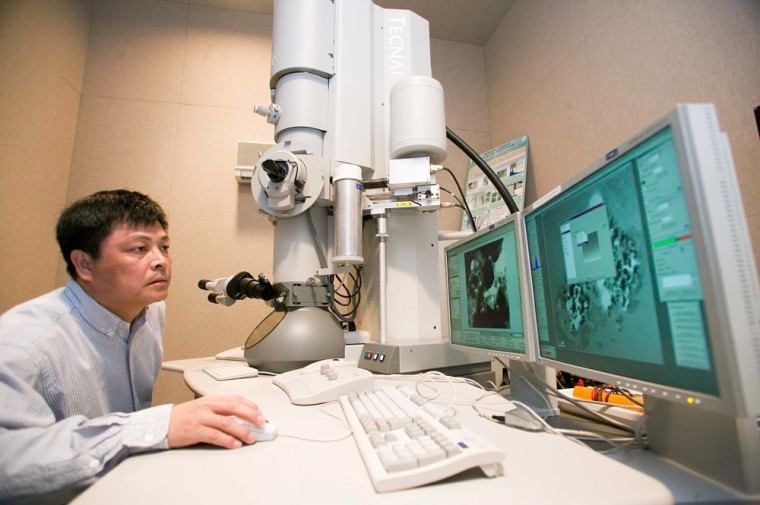Scientists are busy at work “sample harvesting” — extracting comet particles from aerogel-laden capture trays brought back to Earth last month via the Stardust return capsule.
“The pace of sample processing … removing and preparing the particles from the aerogel cells … has ramped up considerably,” Peter Tsou, Stardust deputy principal investigator at the Jet Propulsion Laboratory, said in a recent update.
Detailed scientific scrutiny of material captured during a flyby of Comet Wild 2 during Stardust’s nearly seven-year-long collection route through space is now under way. The craft’s sample return capsule softly touched down Jan. 15 in the remote desert landscape of the Utah Test and Training Range.
Once recovered, the capsule was opened and the collected samples were transferred over to NASA’s Johnson Space Center in Houston.
“The first few Stardust samples have been removed from the comet tray and are currently being analyzed by members of the science team,” said Carlton Allen, astromaterials curator at JSC. “Most of the aerogel cells remain intact in the tray, and these are being carefully documented in the Stardust lab at Johnson Space Center.”
The science team anticipates announcing initial results at the Lunar and Planetary Science Conference, to be held in Houston March 13-17, Allen said.
Cosmic crud
Meanwhile, about 150 eager scientists form an international team now ready for action. They will dive into the dust particles collected by Stardust, making use of a variety of scientific devices.
The Stardust spacecraft used a tennis racket-shaped collector loaded with aerogel to stop, quite literally, the speeding particles in their tracks. Incoming comet particles made carrot-shaped tunnels in the aerogel as they stopped. At the pointed tip of each tunnel a tiny particle can be found.
One scientific team that has begun their study of extracted particles from Stardust is at the Lawrence Livermore National Laboratory in Livermore, Calif.
There, a research team has started dissecting the dust particles using powerful tools. The analysis is a very detailed and precise exercise in which some tracks are carved out of the aerogel with ultrasonic diamond blades. Scientists then use microscopic needles to extract the dust from the tracks.
“It is dirt,” said John Bradley, director of the Lawrence Livermore National Laboratory’s Institute for Geophysics and Planetary Physics. “Basically, it’s cosmic crud,” he commented in a press statement.
Small amount … big payoff
Stardust returned less than a milligram of material — a small amount in quantity, but sure to result in a big payoff, researchers believe.
Bradley likened the inspection of the tiny particles as “not unlike a colonoscopy with the tracks.”
The actual tracks of cometary dust within the aerogel are visible to the naked eye, and the particles themselves can be seen as white specks under a microscope.
“It’s unbelievable. It’s almost surreal,” Bradley explained. “We’ve collected so much stuff. We can see it. With a needle and a spatula … I could put it on the tip of my fingernail.”
Arduous task
Dealing with the ultra-small particles brought back by Stardust means utilizing highly sophisticated equipment.
For example, Livermore researchers are using a transmission electron microscope—the world’s most powerful electron microscope. Also on duty is “NanoSIMS,” short for the nanometer-scaled secondary-ion mass spectrometer. Its task is to analyze the mineralogy, chemical and isotopic composition of the extraterrestrial dust particles.
Bradley called the Stardust mission “a stunning success,” one that far exceeded the scientific community’s most optimistic expectations. The particles snared by Stardust are expected to provide insight into the early formation of our solar system.
“Now we begin the arduous task of photo-documentation, followed by years of great science,” Bradley concluded.
